
Everyone loves shieldbugs – why else would we have given them such a heroic and heraldic name? These distinctive bugs are relatively large, stout and brightly coloured – and robust enough that they can be picked up with impunity. They walk across the hand with a friendly clockwork gait and take to the wing from the end of a finger with an assured model-aeroplane whirr. They are highly photogenic, and there are just enough of them (about 70 British species) to pique the interest of non-specialists.
‘Bug’ (also bugg or bugge) is an old word. Though it is often used nowadays to refer to almost any small, mean creepy-crawly, for the strict entomologist it means a member of the insect order Hemiptera. Characterised by long piercing and sucking mouthparts and an incomplete metamorphosis (see page 61), this large group includes about 100,000 species worldwide, with cicadas, spittlebugs, leaf-hoppers, aphids, scale insects, water boatmen, back-swimmers, bedbugs, capsids and shieldbugs among their number.
Traditionally, ‘shieldbug’ meant a member of the family Pentatomidae, named for their five antennal segments (most other bugs have four) – but this rather unfairly excludes many four-segmented species (family Coreidae) that are still very shield-shaped. Shieldbugs are, in fact, a slightly arbitrary grouping of several related bug families lumped together.
Denne historien er fra May 2021-utgaven av BBC Wildlife.
Start din 7-dagers gratis prøveperiode på Magzter GOLD for å få tilgang til tusenvis av utvalgte premiumhistorier og 9000+ magasiner og aviser.
Allerede abonnent ? Logg på
Denne historien er fra May 2021-utgaven av BBC Wildlife.
Start din 7-dagers gratis prøveperiode på Magzter GOLD for å få tilgang til tusenvis av utvalgte premiumhistorier og 9000+ magasiner og aviser.
Allerede abonnent? Logg på

SNAP-CHAT
Justin Gilligan on giant spider crabs and holding hands with an octopus

STEPPE CHANGE
Herds of saiga have returned to Kazakhstan, but there's a fine balance to tread
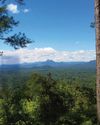
TREES FOR LIFE
Community is at the heart of conservation in the tropical forests of southern Belize
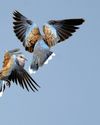
WHEN DOVES CRY
Turtle doves are now the UK's fastest declining bird species, but the RSPB is on a mission to save them

SURVIVAL OF THE CUTEST
We can't help being drawn to cute creatures, but our aesthetic preferences both help and hinder conservation

LIGHT ON THE NORTH
Spectacular images of Arctic foxes, reindeer and musk oxen reveal the wild beauty and diversity of Scandinavia
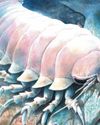
ROLLING IN THE DEEP
The super-sized crustacean that lives in the deepest, darkest ocean
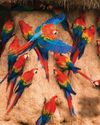
LET'S GET TOGETHER
Clay licks deep in the Amazon explode in a riot of colour, with macaws the stars of the show

FEMALE OF THE SPECIES
To sponge or not to sponge? That is the question for the bottlenose dolphins (Tursiops aduncus) living in Shark Bay, Western Australia.
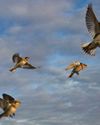
7 nature encounters for the month ahead
WITH NATURALIST AND AUTHOR BEN HOARE